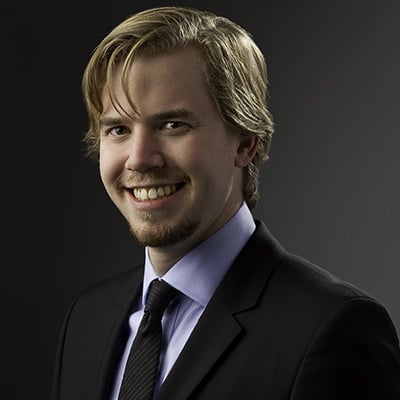
Meet Your Research Scientist: Dr. Stephen Webb
Learn about RadiaSoft’s world-class team in our new Q&A series. Today, we speak with Dr. Stephen Webb, a senior research scientist, about his job, current research, favorite scientist from history, and more.

What do you do at RadiaSoft?
I spend a lot of my time working on R&D projects for the Department of Energy (DOE). Right now, I’m focused on a project to model a novel ultra-high-efficiency free-electron laser (FEL) configuration for an experiment that we’ll be conducting with RadiaBeam, UCLA, and Argonne National Laboratory. In the past, I’ve done a lot of beam dynamics with people at Fermilab and algorithm development and modeling of complex accelerator systems.
Aside from the R&D, I’ve been doing some mentorship for new scientists. I work with them to get up to speed with how we do things and try to learn new skills from them at the same time.
What’s your educational and career background?
I have an undergraduate degree in physics from Georgia Tech. After that, I enrolled at Stony Brook University. While my original background was in condensed matter physics, I bounced around until I landed in the accelerator group at Brookhaven National Laboratory and, ultimately, did my PhD on free-electron laser theory.
Shortly after finishing that program, I moved out to Colorado to take a job at a small R&D company. Then when David, our CEO, started up RadiaSoft, he hired me away as the first full-time employee. I’ve been working at RadiaSoft ever since.
Where did you grow up?
I grew up in suburban Atlanta, not too far from where Donald Glover, the comedian and musician, grew up. He’s got a couple stories about a Home Depot and I know that Home Depot!
Before joining RadiaSoft, what is the strangest or most interesting job you’ve held?
I worked at a used bookstore in Atlanta during summers in college. I’ve got so many stories about that place. One day, a man came in without a shirt or shoes holding a garbage bag full of romance novels to sell. Me and a coworker had to go through a full bag of mildewy paperback romances. We only took eight of them.
We had another regular who’d we actually close the store down for. He was a therapist at the local prison, with a fascinating background, and he’d stock his library with a few grand worth of books on slow Sunday evenings.
Who is your favorite scientific figure from history and why?
The first person that comes to mind is the guy who invented group theory, Évariste Galois. In 1832, when he was 20, he ended up in a duel with someone over a woman and he knew he was going to die because he wasn’t much of a fighter.
He spent the last night before the duel writing down everything, all the math that was in his head. He was shot and later died. Those papers became the foundation for group theory, which is fundamental for math and physics.
Tell us about one of your current or future projects.
I’m pitching a project to DOE on how we can use machine learning for accelerator controls. One of the things with autonomous accelerators, i.e. where the machine does most of the deciding, is that it has to figure out when its diagnostic measurements are faulty.
A human can easily look at a diagnostic measurement and go, yeah, that’s bad. But figuring out how to do that purely with the diagnostic information is a challenging problem. It’s also absolutely necessary for autonomous accelerators. If you don’t have that, it can’t be truly autonomous.
Right now, the approach that’s used for automatic tuning of accelerators is very binary. For example, Diagnostic A is behaving within some tolerance and then it very abruptly goes outside of that. When that happens, the machine drops the diagnostic completely.
What I am working on is a way to allow diagnostics to gracefully fail. That way, you can see that it’s starting to fail, but is still useful right now. It lets you know when to put in a purchase order, while you continue to extract info until you replace it, or it fails.
What is a talent, secret superpower, or fun fact about yourself that people wouldn’t guess?
I’ve been doing aikido for 14 years and am a second-degree black belt. I’ve also been to 20 countries, but never south of the equator.
What’s your favorite Slack emoji and why?
It’s one I made for our Slack, called jetbarf, which I hand drew. It’s a smiley face barfing the jet colormap. We use it to describe a bad plot.
No one should use jet in their figures. It’s overwhelming and there’s all this color-perception theory about why jet is terrible.

What’s something you wish people understood better about RadiaSoft?
RadiaSoft has operated in a lot of different worlds, and because those worlds don’t talk to each other, many people see the company as only Sirepo or RadiaSoft Scientific Consulting.
It’s really all of it. We’re a small enough team that it’s very easy to take disparate disciplines and put them in one room to solve a hard problem. We have a staff with a broad background of talent. Most of our scientists are experts in two or three different fields. We’re an interdisciplinary group that’s very good at porting our skills to new problems. Basically, if you bring us a problem, we might not have solved it exactly, but we probably have the skillset required to attack it.